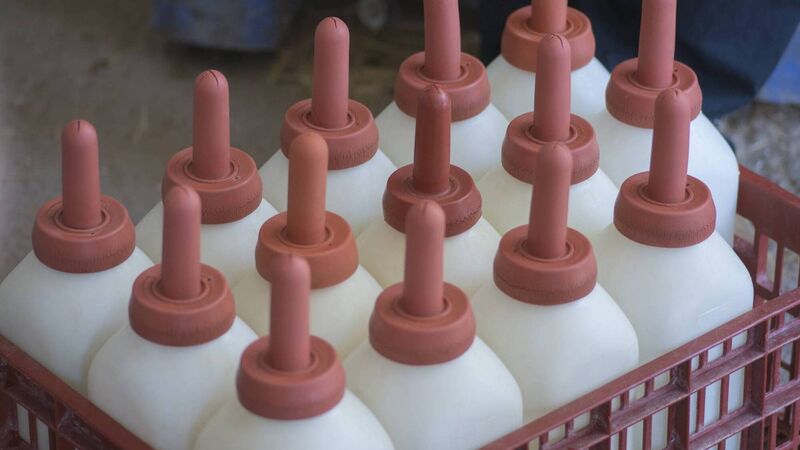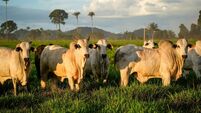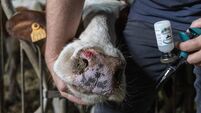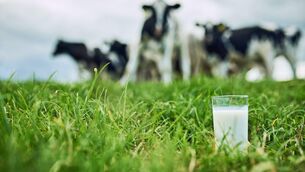Cream of the colostrum — is thicker really better?

It's not necessarily true that thicker colostrum is better or that colostrum from first-lactation cows is of poor quality.
It's not necessarily true that thicker colostrum is better or that colostrum from first-lactation cows is of poor quality.
They are just two of the colostrum myths busted by advisers at Tirlán, who say it is essential a calf gets plenty of clean, high-quality colostrum soon after birth. It provides calves with the best possible start in life.
Fresh colostrum can transfer immune cells to calves, further bolstering the calf's immune system, Tirlán milk suppliers are advised.
But there is more to colostrum than just supplying critical antibodies (or immunoglobulins) to fight off pathogens.
Colostrum also provides growth factors important to the developing calf and its gut.
Rich in nutrients (proteins, fatty acids, vitamins and minerals) and bioactive compounds such as hormones and growth factors that influence post-natal development, growth and performance, colostrum also has insulin-like growth factor, growth hormone, insulin, prolactin, and leptin, which can influence postnatal intestinal development by influencing cell proliferation, digestion, and immune system development, as well as by influencing functions outside of the gut.
Correct dry cow diets will help maximise the quality, including providing the dry cow with minerals and protein.
Two colostrum samples from the same farm may look identical, but the immunoglobulin concentration can vary significantly. Hence, it is not necessarily true that the thicker the colostrum, the better.
The concentration of the immunoglobulins cannot be determined visually. To really assess the quality of the colostrum, a brix refractometer, or colostrometer, should be used.
Research has shown immunoglobulin levels vary widely from one cow to the next, ranging from less than 20 to more than 100 mg/ml.
Calves need to receive 100g to 200g of immunoglobulin to ensure they have sufficient immunity against disease.
Colostrum containing 50 mg/ml or more of immunoglobulin is considered to be a high-quality feed for newborn calves.
A brix value of 22% corresponds to 50 mg/ml, meaning colostrum with a brix value above this cut-off point can be considered high-quality colostrum.

As to the quality of colostrum from first lactation cows, it is true heifers typically produce less colostrum, but that does not mean it is of poorer quality.
Most herds generally do not have sufficient colostrum, because heifers tend to calve first, and the herds do not have enough older cows to supply colostrum to feed all calves.
There is no quality dilution effect in cows yielding higher amounts of colostrum during the first milking.
Again, to really identify high-quality colostrum, you need to measure it.
There were other useful colostrum reminders at the Teagasc National Dairy Conference, where Teagasc Moorepark senior research officer Dr Emer Kennedy said the calf is almost entirely dependent on absorption of maternal immunoglobulins (antibodies) from colostrum, in order to provide passive immunity until the calf's own immune systems are fully functional.
Calves without passive immunity are at increased risk of death and disease, along with slower growth, reduced long-term productivity, decreased milk production in later life, increased culling in the first lactation, and delayed first insemination.
The colostrum '1, 2, 3 rule' dictates calves are fed the first milking only, in the first two hours of life, getting three litres of colostrum.
Tips on storing quality colostrum from disease-free cows were also shared.
Storing this colostrum (with a brix refractometer reading of above 22%) in a fridge within three hours of collection prevents bacterial growth and denaturing of key proteins and antibodies.
If fresh colostrum stored in a fridge is not used within 48 hours, discard it.
But colostrum will last for up to one year when frozen in cartons or zip-lock bags (which are easier to defrost). Never use boiling water or a microwave when defrosting colostrum, leave it to defrost in warm water of 37-38C.
Colostrum should always be fed warm, use warm water to bring it to 37-38C prior to feeding.









